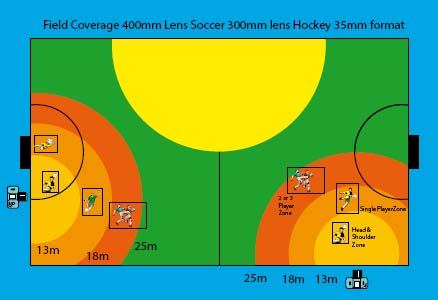Sporting Chance
Page 2
The Exposure Value
This is simple deduction. In average UK sunlight you need 1/ISO as your
shutter speed with f11 as your aperture. For an ISO of 100 and an aperture of
f2.8 you are able to use a shutter speed of 1/2000ths.
The Database
An analysis of the lenses used and camera settings was conducted by the author
some years ago (on film cameras, not digital). The images were all made by the
All Sport photographers and mainly award-winning pictures. We reproduce some of
the data in graphical form. In a nutshell it shows that the most common lens
used is 400mm focal length, at f2.8 and with shutter speeds of 1/1000ths.
Shooting at these magnifications and these shutter speeds requires a steady
hand, smooth movement (if following action) and an ability to follow-focus. The
question of whether to use autofocus or manual used to find in favour of manual
and that was certainly employed 10 years ago. Today’s autofocus is so good that
the options are closer and you can use either, especially using autofocus to
lock-on and then blipping the focus lock just at the correct moment.
Why 400mm?
The costs of Nikon, Canon, Sigma and Tamron long lenses are tabled opposite.
None of them is inexpensive, you are going to have to sell a lot of images
before you get your money back on a 400/2.8, regardless of where you buy it! Why
do you need such a focal length? Here is the answer. The diagram (which is
actually computed for field hockey and a 300mm focal length, but bear with us)
shows zones in which you will capture single players, pairs of players, head and
shoulders, etc. Note that sitting on the halfway line is the worst of all worlds
if you want goal, mouth action. The two prime positions are behind and to the
side of the goal. From the sideline therefore you can cover a goal mouth melee
comfortably with a 300mm lens.
Page 1 - Page 2 - Page 3 - Page 4 - Page 5 - Page 6 - Page 7 - Page 8
Join The Society of International Sport & Leisure Photographers today!






